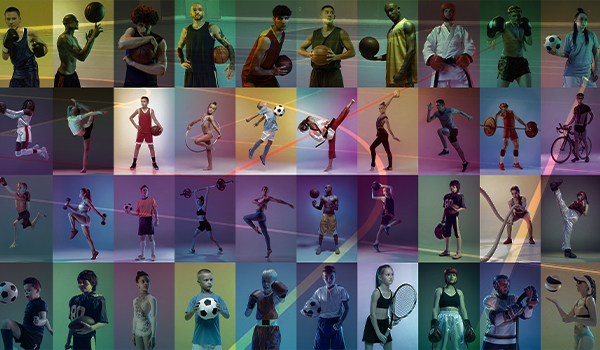
A path to fitness through competitive sports can be a lifetime pursuit, regardless of age. But when it comes to young athletes dreaming of becoming professionals, the path to the pros always reaches a conclusion. Developing young athletes for the NBA or the Olympics is something separate and distinct from those of us who play for fun and a healthy lifestyle. A “path to the pros” might conclude with a student not making the cut on the middle school baseball team. On the other hand, it could end as a Gold Glove MLB infielder with a World Series ring deciding to retire.
By contrast, almost all player development journeys have similar beginnings. In other words, few people end up playing at Fenway Park, but nearly everyone starts on a recreation league field or a sandlot.
You might be wondering what this has to do with designing and building sports facilities. Well, there is a myth that we need to debunk about sports surfaces and floors in particular. That myth goes like this: “For young athletes to develop properly, they need to practice on the same surfaces the pros use.” That is to say, a Little League player should have an MLB quality field if he wants to reach his full potential.
When we think about it in such a hyperbolic way, we can see the flaws of the argument more clearly. Little Leaguers need Little League fields. If we apply this logic to basketball, we should only install professional maple courts with over 50% shock absorption in every elementary school gym.
The truth is that players at different ages and levels of competition require different things from a floor. It could be less than ideal to use a sports surface because someone tells you “it’s what the pros use, so your project needs it, too.” Take the property of shock absorption for example. 50% shock absorption might be great for high school, college, and professional courts, but younger basketball players are simply not heavy enough to engage the full benefits of that property.
Weight compresses the shock pads or foam layer of a sports floor to provide cushion, so the higher levels of shock absorption are only fully activated by adult athletes. Does extra shock absorption hurt? Of course not, but overkill can put you over budget.
Another property to consider is noise reduction. Resilient floors, like Abacus Sports’ Padenpor, Robbins’ Pulastic, or Tarkett’s Omnisports, are point-elastic surfaces that reduce impact sound from bouncing balls and jumping players. As opposed to shock absorption, which is more beneficial for adults athletes, sound reduction is more valuable to younger athletes, particularly in school environments.
A quieter gym is beneficial for coaches because they can communicate more clearly with their teams. Instead of struggling to hear, developing players can understand instructions more clearly. When you’re learning the ins and outs of the sports, being able to hear is essential, but for the pros, higher shock absorption might be more important.
Finally, it’s worth considering the floor maintenance. The simple fact is that gyms at lower levels of competition, such as elementary schools, middle schools, and even high schools, are more likely to be multipurpose spaces. That means more traffic, more practices, more sports, and less time between events. For that reason, versatility and multitasking is a key feature of sports floors for younger athletes. Again, resilient floors like Padenpor, Pulastic, and Omnisports, are a better fit than hardwoods for this age group. These surfaces are well known for their ability to accommodate multipurpose gyms.
The bottom line is this. Different age groups and levels of competition benefit more or less from different properties. Matching the right sports floor to the right scenario is one of the most important considerations for specifying any athletic surface. It isn’t always an easy decision. That’s why Abacus Sports is here to assist. If you need to find the right floor for your project, contact one of our experienced experts. We’re waiting to help.
